Jiajie Zhen
Physical-Virtual Collaboration Graph Network for Station-Level Metro Ridership Prediction
Jan 14, 2020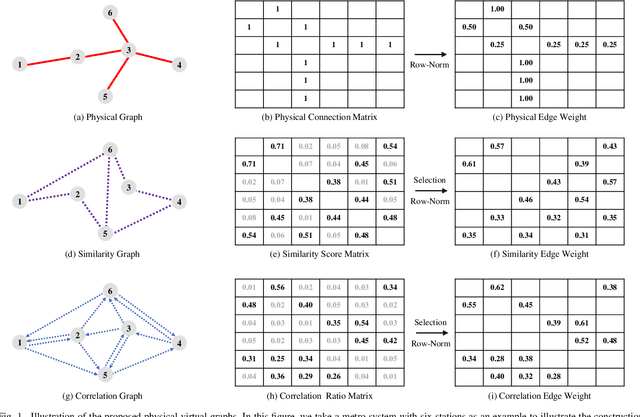
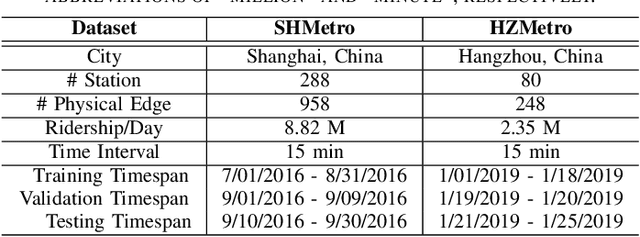


Abstract:Due to the widespread applications in real-world scenarios, metro ridership prediction is a crucial but challenging task in intelligent transportation systems. However, conventional methods that either ignored the topological information of metro systems or directly learned on physical topology, can not fully explore the ridership evolution patterns. To address this problem, we model a metro system as graphs with various topologies and propose a unified Physical-Virtual Collaboration Graph Network (PVCGN), which can effectively learn the complex ridership patterns from the tailor-designed graphs. Specifically, a physical graph is directly built based on the realistic topology of the studied metro system, while a similarity graph and a correlation graph are built with virtual topologies under the guidance of the inter-station passenger flow similarity and correlation. These complementary graphs are incorporated into a Graph Convolution Gated Recurrent Unit (GC-GRU) for spatial-temporal representation learning. Further, a Fully-Connected Gated Recurrent Unit (FC-GRU) is also applied to capture the global evolution tendency. Finally, we develop a seq2seq model with GC-GRU and FC-GRU to forecast the future metro ridership sequentially. Extensive experiments on two large-scale benchmarks (e.g., Shanghai Metro and Hangzhou Metro) well demonstrate the superiority of the proposed PVCGN for station-level metro ridership prediction.
ACFM: A Dynamic Spatial-Temporal Network for Traffic Prediction
Sep 02, 2019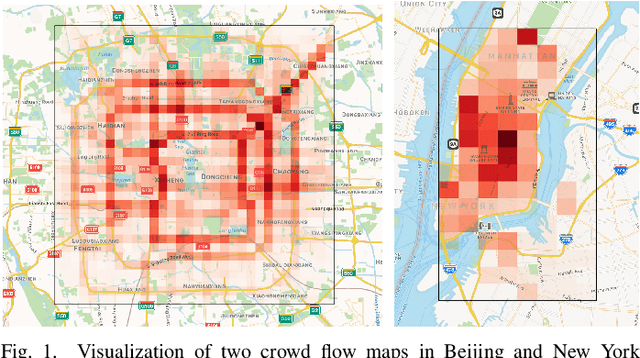
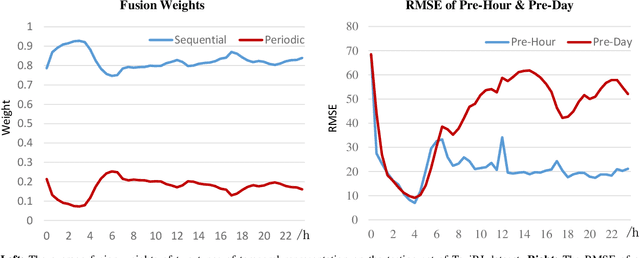
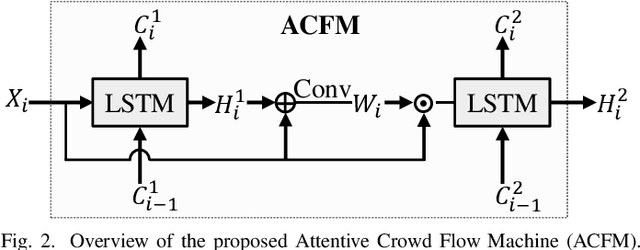
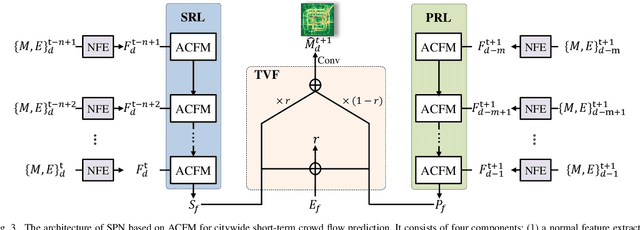
Abstract:As a crucial component in intelligent transportation systems, crowd flow prediction has recently attracted widespread research interest in the field of artificial intelligence (AI) with the increasing availability of large-scale traffic mobility data. Its key challenge lies in how to integrate diverse factors (such as temporal laws and spatial dependencies) to infer the evolution trend of crowd flow. To address this problem, we propose a unified neural network called Attentive Crowd Flow Machine (ACFM), which can effectively learn the spatial-temporal feature representations of crowd flow with an attention mechanism. In particular, our ACFM is composed of two progressive ConvLSTM units connected with a convolutional layer. Specifically, the first LSTM unit takes normal crowd flow features as input and generates a hidden state at each time-step, which is further fed into the connected convolutional layer for spatial attention map inference. The second LSTM unit aims at learning the dynamic spatial-temporal representations from the attentionally weighted crowd flow features. Further, we develop two deep frameworks based on ACFM to predict citywide short-term/long-term crowd flow by adaptively incorporating the sequential and periodic data as well as other external influences. Extensive experiments on two standard benchmarks well demonstrate the superiority of the proposed method for crowd flow prediction. Moreover, to verify the generalization of our method, we also apply the customized framework to forecast the passenger pickup/dropoff demands and show its superior performance in this traffic prediction task.
 Add to Chrome
Add to Chrome Add to Firefox
Add to Firefox Add to Edge
Add to Edge